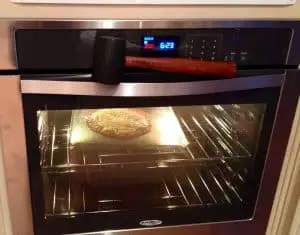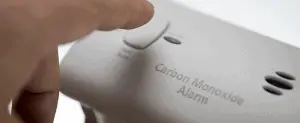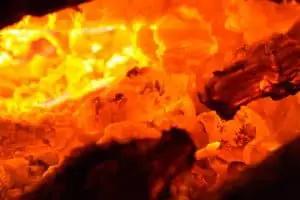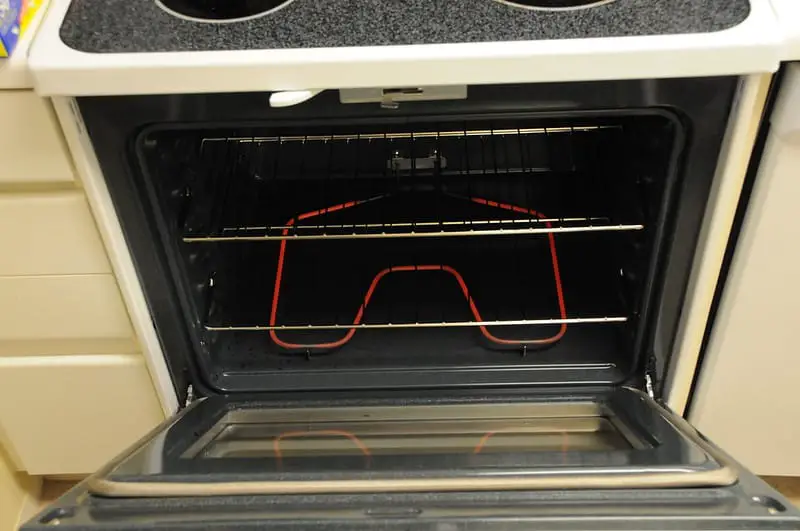Few things are as dreadful as having to endure the winter cold without proper heating equipment in your home.
In this situation, you’d look for all sorts of alternative heating options to keep yourself warm.
You could resort to anything:
- setting up a bonfire of old disused furniture
- cooking more often
- leaving your incandescent lights turned on
- burning your old carpets and rugs,
- you name it!
The problem is that most of these ‘ingenious’ ways of heating are unsustainable or risky or both.
You may even be tempted to leave your oven running overnight or during the entire day.
But, Is It OK To Use Your Oven Or Range As A Heater?
In one word – No. Ovens are designed for cooking, not heating a large empty space that makes up your home. If you bought an oven and ruined it by letting it run the entire day heating your home, the warranty would be voided. There are even bigger reasons why you shouldn’t pull this maneuver. Please imagine the toll it would take on your utility bills! Then there’s the danger of exposing yourself to toxic gases that may make you ill or even prove fatal. There are tons of reasons why warming your home with an oven isn’t particularly a great idea.
Three Reasons Not To Use Your Range Or Wall Oven As A Heater

1. The Energy Cost Would Be Insanely High
An idle oven can cost a king’s ransom in utility bills especially if it’s electric.
The average electric oven draws between 2000 and 5000 watts during a typical cooking session – the average is about 3,000 watts. The amount of energy consumed per hour can be enormous.
Assuming that your electricity company charges 12 cents a kWh (kilowatt-hour), a 3000-watt range will cost you approximately 36 cents for every heating hour.
As for those burners on your electric stovetop, the bigger the burner the more electricity it draws.
Many cooktops start from about 1200 watts for smaller burners to about 3000 watts for larger units, which may cost about 14 cents and 35 cents every passing hour, respectively.
Even if you understand the specific wattages of your oven, plus those of each of the burners, this simple breakdown is an oversimplification.
That is because the actual amount of wattage you are drawing depends on an array of factors, chief of them being the amount of heat you are generating.
As far as energy consumption is concerned, there is a huge difference between self-cleaning the oven at 800 degrees Fahrenheit and preparing some beef jerky at a seemingly smaller 170 degrees Fahrenheit.
Things can get worse if you opt for a gas-powered oven – gas ovens are far more expensive to run compared to their electric counterparts.
The energy consumption per hour is far larger than that of the electric oven.
Given that the average gas-powered oven consumes about 12 mJ (megajoules) of gas per hour, you stand to pay about 65 cents per hour of heating!
Clearly, heating your home with an oven, whether gas-powered or electric, is one of the worst things you could do during any cold season.
2. The Carbon Monoxide (CO) Problem

While you may not even be aware, the gas oven or range in your house can be a source of Carbon Monoxide.
The real trouble is that the production process can take place for an extended period without your knowledge.
More and more scientific research continues to establish that the kitchen area is one of the areas with a greater likelihood to accumulate dangerous levels of carbon monoxide. As a colorless and odorless gas, CO is impossible to notice unless you have a special detector in place.
How does it even happen?
Well, firstly, not all gas types burn the same way. But all of the easily combustible gases have strong potential to generate great levels of carbon monoxide in a relatively short time as long as they burn continuously in low oxygen conditions (Carbon Monoxide is a product of incomplete combustion in oxygen-deprived environments).
A kitchen oven can generate sufficient CO to reach life-threatening levels if allowed to run for extended periods with limited ventilation. This multiplies the danger twofold because, during cold seasons, you are less likely to ventilate the home by opening the windows or doors.
The normal CO level produced in your kitchen should be 30 PPM or less.
However, in any normal kitchen, there are often extended cooking sessions which normally lead to a significant accumulation of CO levels.
That’s in open contravention of the obvious fact that ovens and stoves are designed for not extended, irregular use.
In poorly ventilated spaces, be it your kitchen or family room, the CO levels can escalate very fast to a point of exceeding the permissible levels. Also to blame can be blockage of most air to the burner which often leads to inefficient/incomplete burning.
Examine the color of the generated flame and you will be able to determine whether you are in danger – a yellowish flame is an indicator of incomplete burning hence which translates to increasing levels of CO gas.
Unfortunate victims have reported these symptoms:
- General weakness
- Headaches
- Dizziness
- Nausea
- Shortness of breath
- Loss of consciousness
- Confusion
- Blurred Vision
So, carbon monoxide poisoning is another reason not to use the oven as a space heater.
Related: Should You Leave the Oven ON When You’re Not Home?
3. Fire hazard

One of the most basic precautions given to oven users is to maintain distance and keep an eye on the flame.
This is great for your safety because the cooktop can get pretty hot depending on what you are cooking.
If you must attend to anything such as a phone or opening the door, you are advised to lower the flame or turn off the oven to prevent accidents.
If possible, you are advised to hold the potholder or spoon just to remind yourself to get back ASAP. This may sound too cautious but can help cut the chances of household fire.
If you convert the oven into a space heater, however, you would disregard all these precautions because you need many hours of heating.
You could even fall asleep with a blazing oven in the background.
This is incredibly dangerous by the sound of it.
In the likely event that the fire gets out of hand by accidentally spreading on nearby objects such as papers, towels, or pieces of fabric (which is more likely because your attention is elsewhere this whole time), you may be woken up with smoke and great temperatures from the house inferno. People have died by inhaling the resultant fumes.
Although this may not sound as much of a worry, it is probable and should be another reason to avoid converting your oven into a space heater.
Related: Is It Better To Have A Double Oven Or Two Single Ovens?
In a nutshell
So, is it ok to use your oven or range as a heater? Strongly no! There are simply more risks involved than any imaginable benefits. It’s also not good for your purse because of the bloated energy bills.
The first concern is the energy cost of letting the oven run for a long time just to heat your space
- An idle oven can cost you dearly in utility bills especially if it’s electric.
- The average electric oven draws between 2000 and 5000 watts during a typical cooking session – the average is about 3,000 watts.
- Let’s say your electricity company charges 12 cents a kWh (kilowatt-hour), a 3000-watt range will cost you approximately 36 cents for every heating hour.
- Things can get worse if you opt for a gas-powered oven – gas ovens are far more expensive to run compared to their electric counterparts.
- The energy consumption per hour is far larger than that of the electric oven.
- Given that the average gas-powered oven consumes about 12 mJ (megajoules) of gas per hour, you stand to pay about 65 cents per hour of heating!
The second biggest concern is exposure to the carbon monoxide (CO) gas
- The problem with CO is that it is odorless and colorless, so it can build up to fatal levels without your knowledge unless you have a detector in place
- Carbon Monoxide is a product of incomplete combustion in oxygen-deprived environments, so all of the easily combustible gases have strong potential to generate it when allowed to burn continuously in low oxygen conditions
- The normal CO level produced in your kitchen should be 30 PPM or less.
- However, in any normal kitchen, there are often extended cooking sessions which normally lead to a significant accumulation of CO levels.
- That’s in open contravention of the obvious fact that ovens and stoves are designed for not extended, irregular use.
The third concern is the potential of a home fire
- If you convert the oven into a space heater, you would disregard all the oven safety precautions because you need many hours of heating.
- You could even fall asleep with a blazing oven in the background. This is incredibly dangerous by the sound of it.
- In the likely event that the fire gets out of hand by accidentally spreading on nearby objects such as papers, towels, or pieces of fabric (which is more likely because your attention is elsewhere this whole time), you may be woken up with smoke and great temperatures from the house inferno. People have died by inhaling the resultant fumes.

